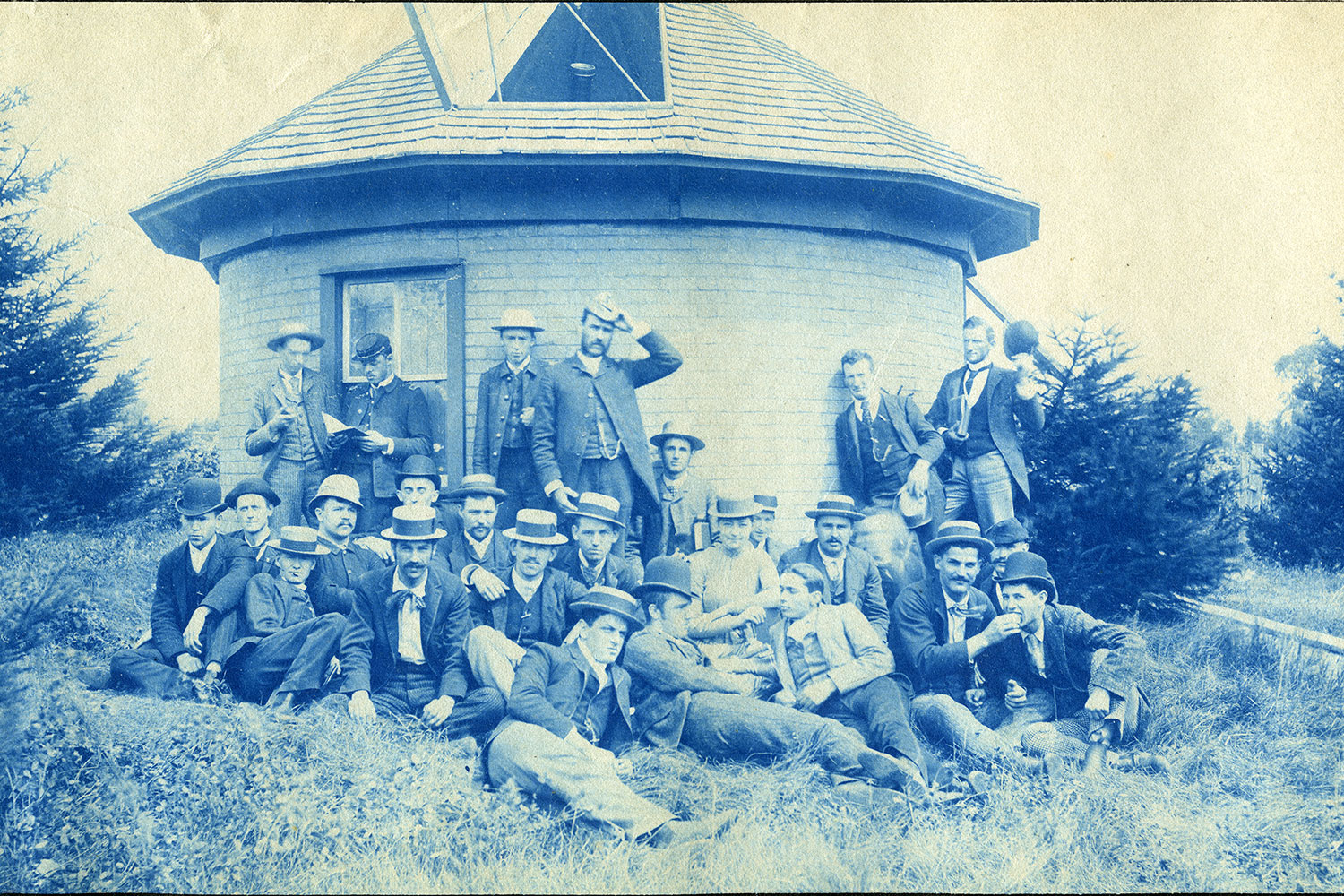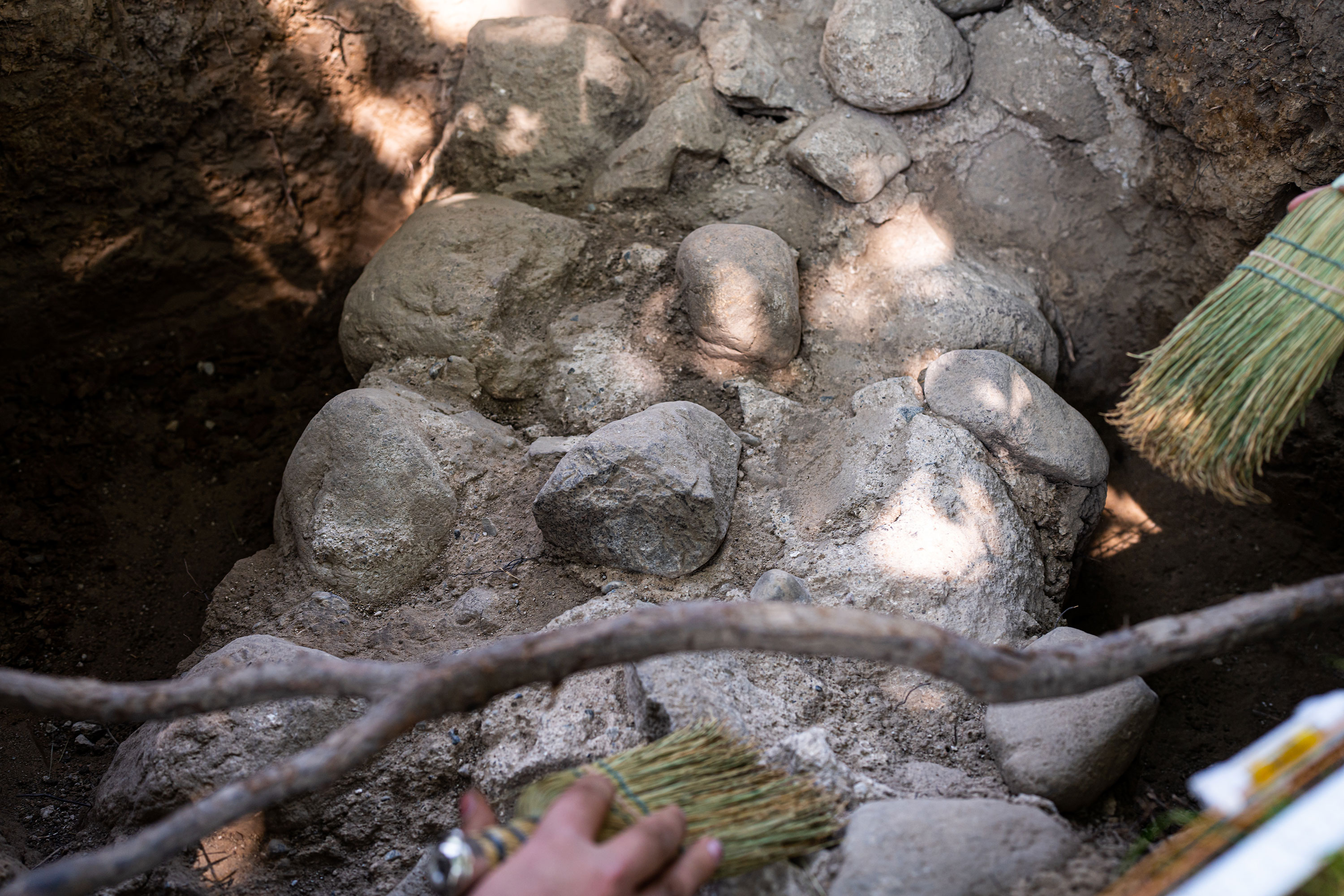In summer of 2023, workers from Michigan State University Infrastructure Planning and Facilities, or IPF, were installing hammock posts close to student residence halls near West Circle Drive when they encountered a hard, impenetrable surface under the ground.
Believing it to be either a large rock or building foundation, IPF called MSU’s Campus Archaeology Program, or CAP. After cross-checking old maps, campus archaeologists determined that it was the foundation of the first observatory on MSU’s campus, constructed in 1881.
“The campus archaeology program is designed to protect and mitigate our below ground heritage here at MSU,” said Stacey Camp, director of CAP and associate professor of anthropology at MSU, “We collaborate with IPF on construction projects and we are involved in preplanning stages to ensure that if they potentially hit an archaeological site, we can protect it in some manner.”
The observatory discovery gives insight into how scientific observation, as well as life on campus, has changed over the last 140-plus years.
“It gives us a sense of what early campus looked like in the late 19th century,” said Ben Akey, MSU campus archaeologist and anthropology doctoral student. “The original campus observatory was built and used at a time when Michigan Agricultural College — what would become MSU — was a radically different institution with only a handful of professors and a relatively small student body.”
Akey’s role entails collaborating with IPF to keep up with campus construction projects, researching any discoveries and supervising crews of students participating in on-campus archaeological dig sites. Working closely with MSU Archives, Akey conducted most of the research to confirm that IPF’s discovery was indeed the foundation of the first campus observatory. They also drew on the book “Stars Over the Red Cedar” by Horace A. Smith, professor emeritus in the MSU Department of Physics and Astronomy for additional information.
“I did a lot of reading to learn more about the first observatory: its history, how it was used and what the building itself might have looked like,” Akey said.
Astronomical observation at MSU: Then and now
Located just behind what is now Wills House, the first observatory on MSU’s campus was built by Professor Rolla Carpenter. An 1873 graduate of Michigan State Agricultural College, Carpenter returned as a professor and taught a wide variety of courses, including mathematics, astronomy, French and civil engineering.

“In the early days of MSU’s astronomy program, Carpenter would take students to the roof of College Hall and have them observe from there, but he didn’t find it a sufficient solution for getting students experience in astronomical observation,” Akey said. “When MSU acquired a telescope, Carpenter successfully argued for funding for a place to mount it: the first campus observatory.”
Today, the MSU observatory is located just south of campus at the intersection of Forest and College roads. It boasts a 24-inch telescope and is used for undergraduate and graduate education and research, as well as faculty research. It also hosts free public observation nights.
Levi Webb is a fourth-year astrophysics and anthropology major who works at MSU’s current campus observatory and participated in the archaeological dig of the first on-campus observatory.
“It’s amazing to see how far we’ve come from a little 16-foot circular building to a large building with a high-quality telescope and an electric dome,” Webb said. “Seeing the difference between how observing used to be versus how it is now is very interesting to me and makes me appreciative of the observatory we have now.”
Real-world experience: Field school and summer digs
While most students who work with campus archaeology are anthropology majors, some — like Webb — have backgrounds in other areas of study. In addition to Webb, the observatory dig crew included students majoring in classical and romance studies and forensics.
“Having students from majors outside anthropology gives us a different perspective on what we’re finding in the ground,” said Camp. “We feel really lucky to have a wide variety of knowledge on our dig sites.”
Akey said working on a dig site, such as the first campus observatory, helps prepare students for careers in archaeology.
“CAP provides an essential venue of professional training for both graduate students and undergraduates in archaeological fieldwork in analysis,” Akey said.
One training opportunity is an undergraduate field school led by CAP. Most archaeology and anthropology programs require fieldwork, which is often done overseas and can often be costly. Every other summer, MSU hosts a field school that gives Michigan students who are interested in archaeology, but may not have the financial resources to travel abroad, an opportunity to do hands-on work on an actual site.
For the upcoming field school in 2024, CAP is planning to focus on the first observatory site.

“Next summer, we’re planning to run an undergraduate archaeological field school where students can enroll for credit and get experience excavating the foundation of the first observatory on campus,” Camp said. “We anticipate having 18 to 20 students work on the project and get great experience doing archaeology.”
Camp said seeing students develop an interest in connecting the past with the present energizes her.
“I love watching students connect with artifacts and try to tell a bigger story about humankind with those objects,” she said.
Connecting past and present
Akey said they appreciate the unique opportunity to learn more about MSU’s campus history while developing skills that will serve them beyond the completion of their Ph.D.
“One of the things I value most about archaeological work is kind of building a sense of connection to landscapes and people,” they said. “With a campus this old, there’s a lot of historic materials, archaeological materials that would be disturbed by all the ongoing construction on campus. Because of our partnership with IPF, those objects are not disturbed, and we get a chance to document and analyze some of them. It’s a pretty cool job.”
Camp was initially drawn to archaeology as a tactile way to interact with history and gain new perspectives.
“Archaeology gives us a bit more knowledge about how people lived in the past, how they did things differently and how maybe we could do things differently in the contemporary world as well,” she said.
Webb sees this firsthand through his work at the observatory and on archaeological dig sites.
“In my job working outreach at the observatory, I meet people who graduated from MSU many, many years ago who come and see the work that we’re doing, and they’re very proud to see how campus has grown,” he said. “I have even more insight into the campus’ evolution after learning about the first observatory and the history of scientific observation on campus.”
Camp said she feels honored to connect MSU’s past to its present through her work with CAP.
“MSU is a passionate and dedicated community,” she said. “Spartans are very invested in this campus and its history, and being able to share a little bit of my knowledge with people is very rewarding.”